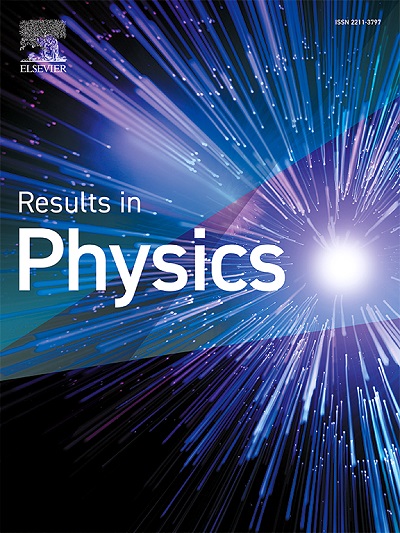预测介电矩阵包围的CdS/ZnSe核壳球形量子点光离截面的机器学习算法
IF 4.4
2区 物理与天体物理
Q2 MATERIALS SCIENCE, MULTIDISCIPLINARY
引用次数: 0
摘要
在本研究中,我们探索了被不同介电基质包围的CdS/ZnSe核/壳球形量子点(CSQD)的光电离截面(PCS)的预测。将量子点系统嵌入聚乙烯醇(PVA)、聚氯乙烯(PVC)和二氧化硅(SiO2)基体中,在不同的核壳尺寸和介电环境下进行建模。我们的研究结果表明,在PVA基体中,PCS的共振峰经历了红移,其幅度增加,而在PVC和SiO2基体中,PCS的幅度减小,其共振峰发生了蓝移。使用三种不同的机器学习算法来估计光电离截面,即人工神经网络(ANN),决策树(DT)和随机森林回归(RFR)。其中,随机森林回归被证明是最成功的算法,特别是对于SiO2矩阵,其决定系数R2 = 0.999,均方误差MSE=10-4,均方根误差RMSE=0.0077。虽然在SiO2矩阵中,DT比ANN表现出更低的MSE、MAE和RMSE,但ANN在捕捉更复杂的非线性关系方面表现出潜力。这些结果证明了RFR优越的预测能力,并突出了机器学习在量子点系统建模中的适用性。这项工作通过精确和高效的计算方法为光电器件设计的优化提供了有价值的见解。本文章由计算机程序翻译,如有差异,请以英文原文为准。
Machine learning algorithms for predicting the photoionization cross section of CdS/ZnSe core/shell spherical quantum dots surrounded by dielectric matrices
In this study, we explore the prediction of the photoionization cross section (PCS) of CdS/ZnSe core/shell spherical quantum dots (CSQD) surrounded by different dielectric matrices. The quantum dot systems, embedded in polyvinyl alcohol (PVA), polyvinyl chloride (PVC), and silicon dioxide (SiO2) matrices, were modeled under varying core-shell dimensions and dielectric environments. Our findings show that the resonant peak of the PCS experience a redshift with improvement in their amplitude in the case of the PVA matrix, while in the case of the PVC and SiO2, the magnitude of the PCS is reduced and their resonant peak suffers a blueshift. Three different machine learning algorithms were used to estimate the photoionization cross-section, namely Artificial Neural Networks (ANN), Decision Trees (DT), and Random Forest Regressors (RFR). Among these, Random Forest Regression proved to be the most successful algorithm, particularly for the SiO2 matrix, achieving exceptional performance with the coefficient of determination = 0.999 Mean Squared Error and the Root Mean Squared Error . While DT exhibited lower MSE, MAE, and RMSE than ANN in the SiO2 matrix, ANN showed potential in capturing more complex nonlinear relationships. These results demonstrate the superior predictive capabilities of RFR and highlight the applicability of machine learning in modeling quantum dot systems. This work offers valuable insights into the optimization of optoelectronic device design through accurate and efficient computational methods.
求助全文
通过发布文献求助,成功后即可免费获取论文全文。
去求助
来源期刊

Results in Physics
MATERIALS SCIENCE, MULTIDISCIPLINARYPHYSIC-PHYSICS, MULTIDISCIPLINARY
CiteScore
8.70
自引率
9.40%
发文量
754
审稿时长
50 days
期刊介绍:
Results in Physics is an open access journal offering authors the opportunity to publish in all fundamental and interdisciplinary areas of physics, materials science, and applied physics. Papers of a theoretical, computational, and experimental nature are all welcome. Results in Physics accepts papers that are scientifically sound, technically correct and provide valuable new knowledge to the physics community. Topics such as three-dimensional flow and magnetohydrodynamics are not within the scope of Results in Physics.
Results in Physics welcomes three types of papers:
1. Full research papers
2. Microarticles: very short papers, no longer than two pages. They may consist of a single, but well-described piece of information, such as:
- Data and/or a plot plus a description
- Description of a new method or instrumentation
- Negative results
- Concept or design study
3. Letters to the Editor: Letters discussing a recent article published in Results in Physics are welcome. These are objective, constructive, or educational critiques of papers published in Results in Physics. Accepted letters will be sent to the author of the original paper for a response. Each letter and response is published together. Letters should be received within 8 weeks of the article''s publication. They should not exceed 750 words of text and 10 references.
 求助内容:
求助内容: 应助结果提醒方式:
应助结果提醒方式:


